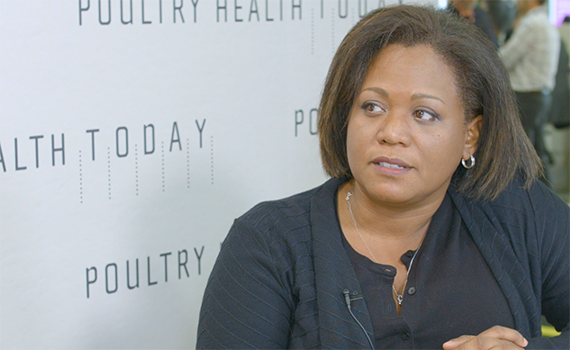Avian Mycoplasma diagnostics

By Naola Ferguson-Noel
Poultry Diagnostic and Research Center, Department of Population Health
University of Georgia, Athens, GA
The pathogenic avian mycoplasmas Mycoplasma synoviae (MS), Mgallisepticum (MG), M.meelagridis (MM) and M.iowae (MI) are vertically and horizontally transmitted. The current approaches to avian mycoplasma control in the US include continuous surveillance and quarantine, medication and/or elimination of infected breeding flocks.
Elimination of a positive breeder flock is the surest way to eliminate the shed to the progeny, but this is not always feasible. In these instances vaccination and/or antibiotic treatment may be applied. To maintain mycoplasma-free flocks it is important to use only negative replacements, use single age farms (isolated if possible), depopulate and disinfect between flocks, maintain good biosecurity and set up monitoring program.
Serology is the primary method for flock screening. Serological monitoring performed periodically is the basis of voluntary control programs such as the National Poultry Improvement Plan (NPIP). Sera commonly are analyzed for MG antibodies using the serum plate agglutination (SPA) test, a hemagglutination- inhibition (HI) test and an enzyme-linked immunosorbent assay (ELISA) test.
The SPA test is rapid, sensitive and inexpensive but may result in non-specific reactions, so that reactors must generally be confirmed by the HI or ELISA tests. Serum dilution has also been used to reduce non-specific reactions. The SPA test is not recommended for screening turkeys for MS infections, as it is often less sensitive than ELISAs in this situation. Fresh, unfrozen serum is necessary for the SPA test; poor quality or frozen serum can lead to false positives. Frozen serum can be used for the other serological tests.
In general the ELISA test is more sensitive than the HI test and more specific than the SPA test. Several commercial kits are available.
The HI test is less sensitive but more specific than the SPA or ELISA tests. It is however, a more time consuming procedure. Seroconversion may also take 3 – 4 weeks.
Mycoplasma spp. infection is generally confirmed by the isolation and identification of the organisms or by DNA based detection methods. There is no reliable serological test for M.iowae, so that testing for this species is limited to culture or DNA based methods.
Isolation and identification of the organism (i.e. culture) is considered the gold standard for diagnosis. Mycoplasma isolates are commonly identified using direct and indirect immunofluorescence. Mycoplasma species-specific hyperimmune sera is an essential reagent for these tests and may limit the ability of some laboratories to perform the test. Pathogenic Mycoplasma spp. are often fastidious so that culture may take 3 – 4 weeks.
For culture and PCR, swabs from trachea or choanal (palatine) cleft are often used. Sinus exudates, as well as swabs of the air sacs, turbinates, synovial membranes, joint fluid and lungs and other tissues may also be used. For M.iowae, cloacal swabs may also be useful. Pre-moistened swabs may improve the recovery of Mycoplasma. Swabs should be kept cool (40C) and shipped overnight for culture. For PCR, dry swabs are recommended; they should be kept cool (40C and below) and shipped as soon as possible for best results. Tissues may be frozen (preferably less than 24 hours) if not being submitted the same day and should arrive at the lab still frozen.
MG, MS, MM and MI species-specific PCR techniques have been developed. These procedures are sensitive, specific, rapid and amenable to high-throughput diagnostics. International samples can be received on FTA® cards for PCR testing, although there may a slight reduction in sensitivity over swabs. Genotyping (DNA sequencing) for epidemiological purposes (traceback; vaccine vs field strain) can be performed on PCR positive samples for MG and MS.
In general, a confirmed diagnosis of avian mycoplasmosis should involve at least two positive tests by two different test methods (for example: SPA and HI, or ELISA and PCR). Although the available tests work well in most circumstances they may at times be susceptible to false positives or false negative results. A final decision on the disposition of a suspect flock should involve at least one confirmatory test – preferably PCR or culture – in addition to serology.

Tracheal swabbing for culture and/or PCR. Avoid contamination of the swab with feed and blood as much as possible.

Mycoplasma culture. Swabs should be gently swirled in mycoplasma broth media and discarded. (Do not
leave swabs in the media; do not pool samples).
Article courtesy of The Poultry Informed Professional
Published by the Department of Population Health, University of Georgia
Editor: Dr Stephen Collett, Associate Professor
Posted on August 4, 2014
 We’re glad you’re enjoying
We’re glad you’re enjoying










